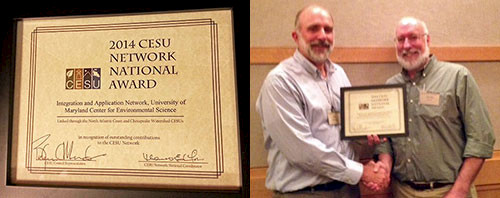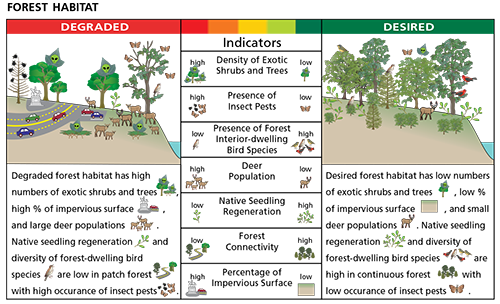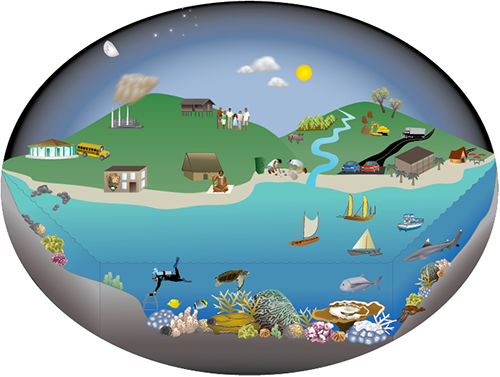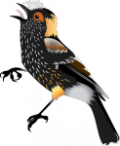IAN receives National Cooperative Ecosystems Study Unit award
Bill Dennison ·As part of the biennial gathering of Cooperative Ecosystems Study Unit (CESU) council members and directors at the National Conservation Training Center (NCTC) near Shepardstown, West Virginia, the Integration and Application Network received the National CESU award for contributions to the national CESU network. This award was announced by Dr. Tom Fish, National Coordinator of the CESU network, as part of his State of the CESU address, and I accepted the award on behalf of the IAN team.

In accepting the award, I acknowledged Drs. Charlie Roman, North Atlantic Coast CESU coordinator and Walter Zachritz, the Chesapeake Watershed CESU coordinator for their assistance in developing the IAN - National Park Service partnership. In addition, Shawn Carter (now USGS) and Pat Campbell, Inventory and Monitoring program coordinators, National Park Service and collaborators Tim Carruthers and Todd Lookingbill were instrumental in developing various approaches and products for the National Park Service.

IAN was involved in producing a suite of Natural Resource Condition Assessments (NRCA) for various national parks in the mid-Atlantic region. These NRCAs integrated air, water, biota and landscape features to assess the status of a variety of aquatic and terrestrial habitats. The IAN team was challenged to find ways to assess a variety of natural habitats (e.g., barrier islands, shallow subtidal, forests, streams, wetlands) and a variety of artificial habitats (e.g., croplands grazing lands, recreational areas, roadway easements). The IAN Science Integrators and Science Communicators developed conceptual diagrams of the key features and major threats to each park. These conceptualization a helped establish the desired and degraded conditions for each each habitat type and various indicators were selected. The IAN team worked closely with the Inventory and Monitoring team at the Center for Urban Ecology and the resource managers at the various national parks to obtain data for the assessments. Thresholds for each indicator were established and the park was scored based on attainment of the thresholds for each indicator.

IAN has also developed a suite of communication products for the Pacific network parks, including posters, brochures, newsletters and web content. ![]() Currently, a smart phone app is being developed for identifying Hawaiian birds. IAN also developed education modules for barrier islands and sea level rise and coral reefs and climate change. These education modules include videos, interactive activities for students, and a suite of teacher resources. A variety of symbols and conceptual diagrams have been generated as a result of the IAN - NPS partnership as well.
Currently, a smart phone app is being developed for identifying Hawaiian birds. IAN also developed education modules for barrier islands and sea level rise and coral reefs and climate change. These education modules include videos, interactive activities for students, and a suite of teacher resources. A variety of symbols and conceptual diagrams have been generated as a result of the IAN - NPS partnership as well.

There are several reasons the IAN - NPS partnership has been so productive and enjoyable. First, both IAN and NPS staff appreciate the importance of good, clear communication products and approaches.  Second, the appreciation of applying the best practical science for effective management is shared by both IAN and NPS staff. Third, IAN staff invariably enjoy visiting and learning about the national parks and the resource managers and rangers enjoy sharing their experience and knowledge about their parks. Finally, another shared value is that both IAN and NPS staff are doing what they love. They appreciate their unique opportunity to create better environmental outcomes using good science and effective communication. In many ways, this CESU award is a reflection of these shared values.
Second, the appreciation of applying the best practical science for effective management is shared by both IAN and NPS staff. Third, IAN staff invariably enjoy visiting and learning about the national parks and the resource managers and rangers enjoy sharing their experience and knowledge about their parks. Finally, another shared value is that both IAN and NPS staff are doing what they love. They appreciate their unique opportunity to create better environmental outcomes using good science and effective communication. In many ways, this CESU award is a reflection of these shared values.
Symbol Credits:
1. Bird features icon for the smart Hawaiian birds phone app by Jane Hawkey
2. ‘Ākohekohe (Palmeria dolei) for the smart Hawaiian birds phone app by Jane Hawkey
About the author
Bill Dennison

Dr. Bill Dennison is a Professor of Marine Science and Interim President at the University of Maryland Center for Environmental Science (UMCES).
Next Post > Oklahoma report card song
Comments
-
Atika 7 months ago
Thank you for sharing this information with us, i really appreciate your post!